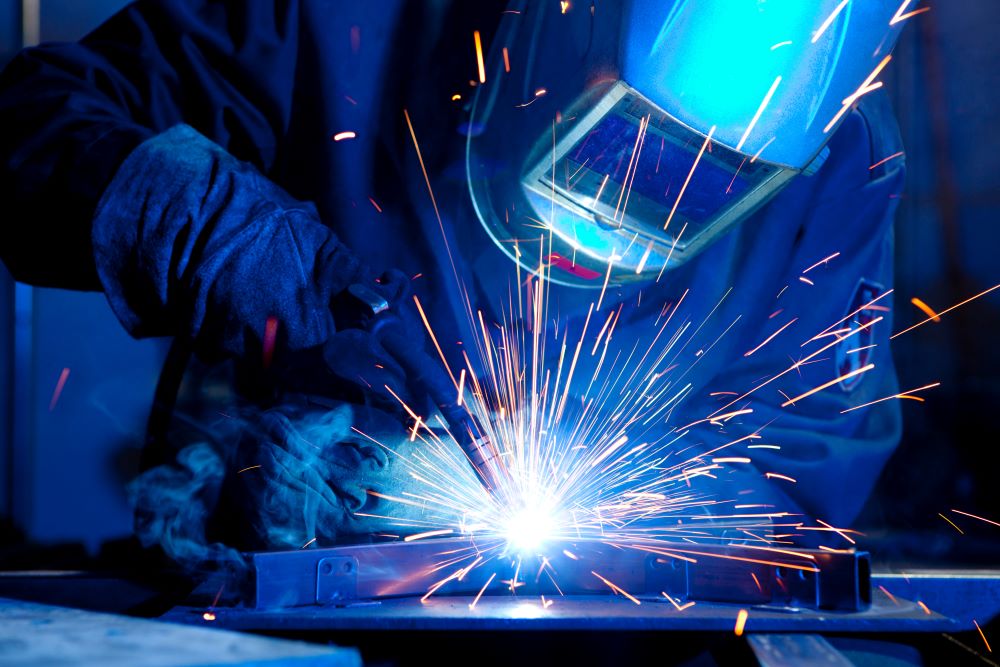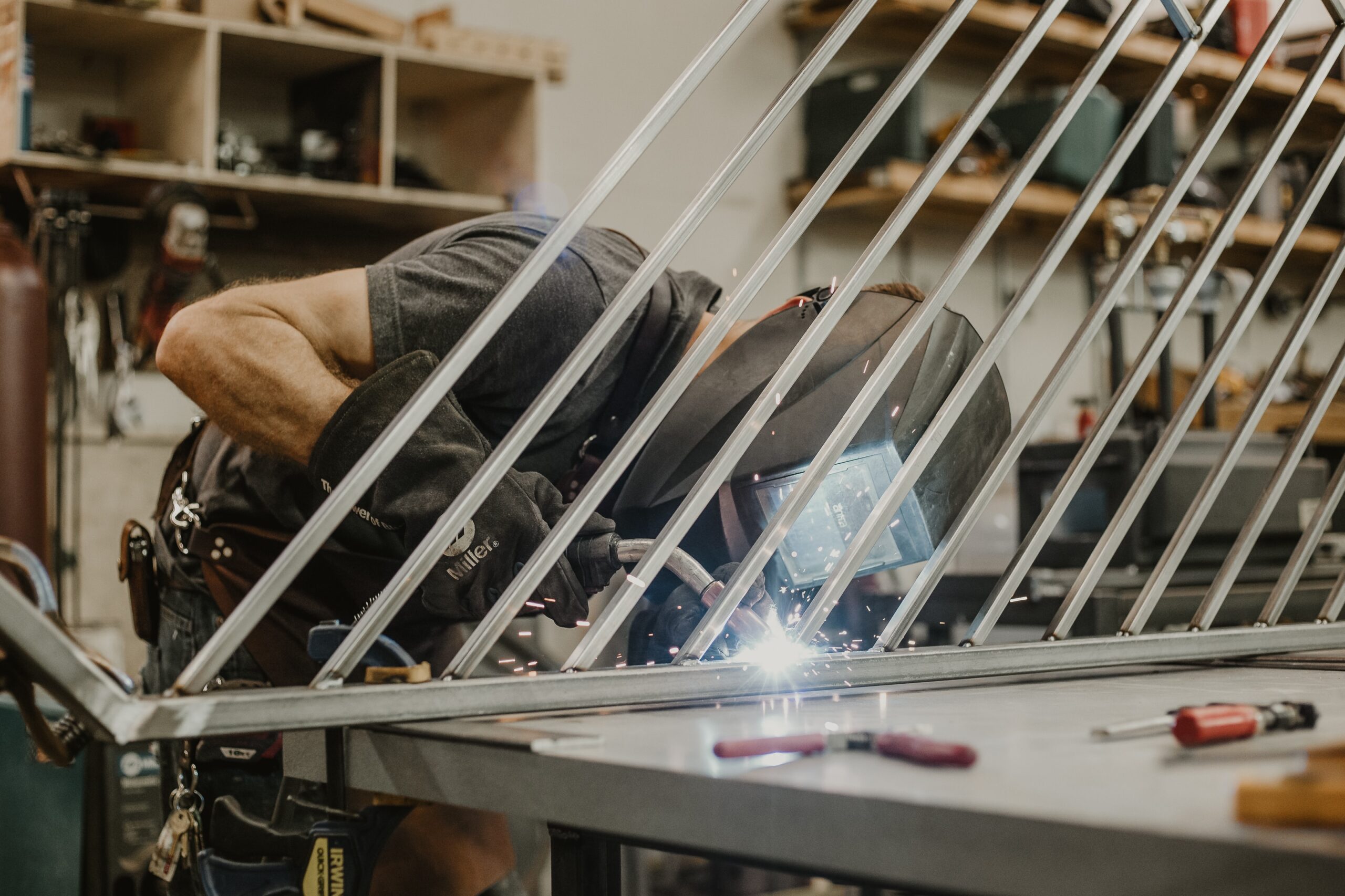Typical Welding Fixing Issues and Just How to Address Them Efficiently
Welding repairs usually experience a range of issues that can threaten the stability of the last product. Common problems include insufficient penetration, porosity, and misalignment, among others. Each problem offers unique difficulties that call for particular approaches for resolution. Comprehending these issues is important for welders aiming to improve their skills and outcomes. This conversation will discover these typical welding repair concerns and reliable methods to address them.
Poor Penetration
Inadequate infiltration happens when the weld steel falls short to fully fuse with the base product, leading to weak joints and prospective architectural failures. This problem usually comes from insufficient warmth input, incorrect electrode angle, or incorrect welding speed. Welders may encounter inadequate penetration due to a mistake of the required parameters for a specific material thickness or kind. Furthermore, contamination on the base material's surface can hinder efficient bonding, aggravating the issue. To resolve insufficient infiltration, welders must ensure proper setups on their tools and maintain a tidy job surface. Normal assessment of welds is advised to recognize any deficiencies early, permitting prompt modifications and the avoidance of endangered structural stability in welded assemblies.
Porosity
Porosity is a typical defect in bonded joints that manifests as little gas bubbles caught within the weld metal. This defect can jeopardize the integrity of the weld, resulting in reduced toughness and potential failing under tension. Belgrade Welding. Porosity commonly arises from contamination, wetness, or incorrect welding methods, which enable gases to get away right into the liquified weld swimming pool. To address porosity, welders ought to guarantee correct surface area preparation, keep a tidy functioning atmosphere, and make use of ideal welding specifications. In addition, picking the appropriate filler material and securing gas can alleviate gas entrapment. Routine examination and testing of welds can help determine porosity early, assuring timely restorative actions are taken, thus maintaining the top quality and dependability of the welded framework
Imbalance
Imbalance in welding can develop from numerous elements, including inappropriate arrangement and thermal expansion. Recognizing the origin creates is important for efficient resolution. Numerous improvement methods are offered to straighten elements and guarantee architectural honesty.
Reasons for Imbalance
Welding imbalance commonly originates from a variety of underlying issues that can endanger architectural honesty. One main reason is incorrect fit-up of components prior to welding, which can lead to gaps and uneven surfaces. Variants in thermal development throughout the welding procedure can additionally result in distortion, especially if the materials being joined have various coefficients of growth. Additionally, inadequate fixturing and securing might stop working to hold elements firmly in position, causing activity during welding. Badly kept tools, consisting of welding machines and devices, might introduce incongruities in the weld bead, more adding to imbalance. Operator mistake, stemming from inadequate training or experience, can likewise play a considerable role in producing misaligned welds.

Improvement Methods Offered
Addressing imbalance properly calls for a mix of rehabilitative strategies tailored to the certain concerns available. One typical method is using components or jigs to hold parts in the appropriate setting during welding, making sure constant positioning. Furthermore, pre-heating the products can help in reducing distortion and improve fit-up. For significant imbalance, mechanical adjustment methods, such as making use of hydraulic jacks or clamps, can be utilized to correct the setting prior to welding. Post-weld warm treatment may likewise be needed to eliminate stresses brought on by imbalance. Lastly, careful assessment and modification throughout the arrangement phase can protect against imbalance concerns from ending up being significant problems, promoting a smoother welding procedure and boosting total architectural stability.
Distortion
Distortion is a common obstacle in welding that can develop from different elements, including uneven heating & cooling. Recognizing the causes of distortion is crucial for implementing effective prevention methods. Resolving this concern not only boosts structural integrity but also enhances the overall high quality of the weld.
Root causes of Distortion
When subjected to the extreme warm of welding, products frequently undergo modifications that can cause distortion. This phenomenon mostly develops from thermal expansion and tightening throughout the welding process. As the weld area warms up, the material broadens; upon air conditioning, it contracts, which can create interior tensions. On top of that, unequal home heating throughout a workpiece can worsen these tensions, resulting in warping or bending. The kind of product also plays a substantial role; metals with differing thermal conductivity and coefficients of development may respond differently, causing uncertain distortions. Poor joint design and poor fixturing can contribute to misalignment throughout welding, enhancing the probability of distortion. Recognizing these causes is essential for efficient welding repair and prevention strategies.
Prevention Techniques
Effective prevention strategies for distortion during welding concentrate on controlling warmth input and guaranteeing appropriate joint style. Preserving a consistent warm input assists to minimize thermal expansion and contraction, which can result in distortion. Making use of strategies such as preheating the workpiece can additionally reduce the temperature gradient, promoting uniform home heating. Furthermore, choosing proper joint styles, such as T-joints or lap joints, can enhance stability and reduce stress and anxiety concentrations. Implementing appropriate fixturing to protect the work surfaces in position further aids in keeping positioning throughout the welding process. Lastly, staggered welding sequences can distribute warmth more equally, preventing local distortion. By applying these approaches, welders can significantly decrease the possibility of distortion and improve the total high quality of their welds.
Cracking
Splitting is a common concern experienced in welding repairs, frequently resulting from numerous aspects such as incorrect cooling rates, product option, or poor joint preparation. The event of fractures can considerably endanger the integrity of the weld, causing possible failures throughout operation. To resolve this issue, welders need to initially examine the origin causes, making certain that materials work and appropriately picked for the specific application. In addition, managing the air conditioning rate during the welding process is essential; fast cooling can induce tension and bring about splitting. Proper joint design and preparation likewise add to minimizing the risk. Executing these approaches can enhance weld high quality and durability, eventually minimizing the chance of splitting in completed weldments.

Insufficient Blend
A substantial issue in welding repairs is incomplete fusion, which occurs when the weld metal does not properly bond with the base product or previous weld passes - Montana Mobile Welding and Repair Belgrade Fabrication. This flaw can result in weak points in the joint, potentially compromising the honesty of the bonded structure. Factors contributing to insufficient fusion consist of insufficient heat input, incorrect welding technique, and contamination of the surface areas being joined. To resolve this issue effectively, welders need to ensure correct pre-weld cleansing and surface area prep work, as well as change their welding parameters to achieve ample infiltration and blend. Routine assessment during the welding procedure can additionally aid recognize incomplete blend early, enabling timely rehabilitative steps to enhance the total top quality of the weld
Overheating
While welding repair work can improve structural integrity, overheating presents a significant challenge that can lead to product destruction. Excessive warmth throughout welding can change the mechanical residential properties of metals, leading to reduced strength, boosted brittleness, and warping. This sensation is especially vital in high-stress applications where structural integrity is vital. Recognizing overheating can include visual evaluations for staining or distortion, as well as keeping track of temperature level during the welding procedure. To alleviate the dangers related to getting too hot, welders should use appropriate methods, such as controlling warmth input, changing traveling speed, and using appropriate filler products. Furthermore, check here applying pre- and post-weld warm treatments can assist recover material buildings and improve the overall quality of the repair work, making certain long-term performance and safety and security.
Often Asked Inquiries
What Are the Usual Indications of a Welding Flaw?

How Can I Evaluate My Welds for Quality?
To check welds for top quality, one can utilize aesthetic evaluations, ultrasonic screening, and radiographic methods. Each technique ensures structural honesty, recognizes problems, and validates adherence to specified requirements, inevitably enhancing the integrity of the welded joints.
What Security Precautions Should I Take While Welding?
When welding, one must prioritize safety and security by using appropriate personal protective equipment, making sure correct air flow, protecting combustible products away, maintaining a clean work space, and knowing surroundings to stop injuries and crashes.
Can I Fix a Weld Without Renovating the Entire Joint?
Fixing a weld without renovating the entire joint is feasible, depending on the damage (Welding). Strategies such as grinding, including filler material, or making use of a welding procedure can effectively attend to certain problems while maintaining the bordering framework
What Tools Are Important for Reliable Welding Repairs?
Vital devices for effective welding fixings consist of a welding maker, cable brush, mill, safety gear, clamps, and filler materials. Each tool plays a vital role in making sure top quality and security during the repair process. Porosity typically occurs from contamination, dampness, or incorrect welding strategies, which allow gases to run away into the liquified weld pool. Badly maintained tools, consisting of welding devices and tools, may present incongruities in the weld grain, additional adding to imbalance. When subjected to the intense warmth of welding, materials often undertake changes that can lead to distortion. Fracturing is a typical issue experienced in welding repair work, frequently resulting from numerous variables such as incorrect air conditioning rates, product selection, or insufficient joint prep work. A considerable problem in welding repair work is insufficient combination, which occurs when the weld steel does not properly bond with the base product or previous weld passes.